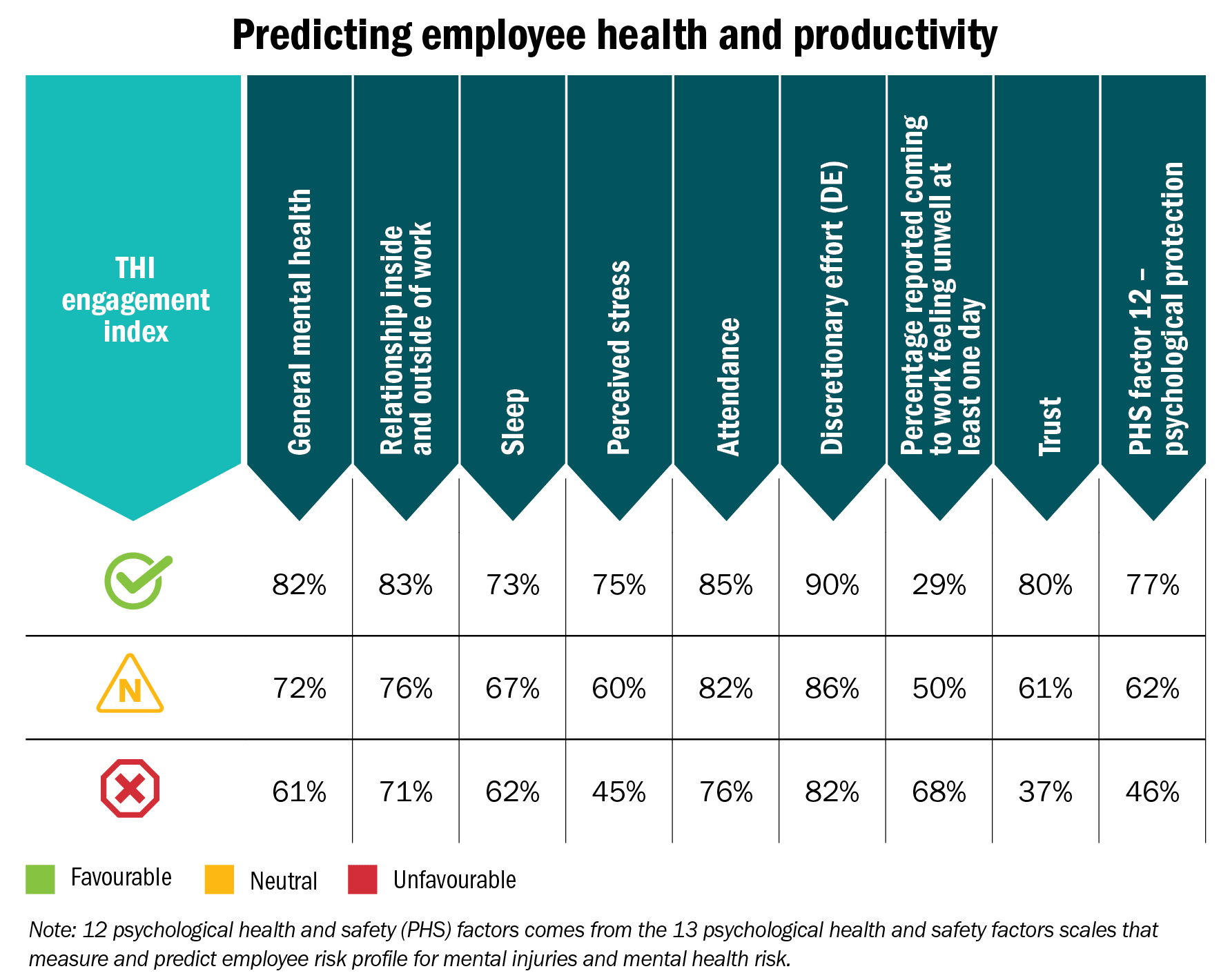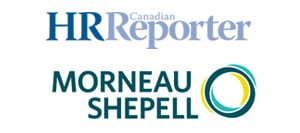An improved score doesn’t necessarily mean other metrics are improving

What does an engagement score tell senior leadership?
The obvious response is that there’s a percentage of employees who are disengaged (red), neutral (yellow) or highly engaged (green), and “the more people in the green bucket, the greater the organization’s ability to attract and retain talent and maximize employees’ productivity.”
This is a partially correct response — but incomplete, and perhaps a bit misleading.
Some engagement tools become institutional pillars because they’re relied upon for evaluating and holding leadership accountable — and, done right, this can be a positive approach.
At many organizations, management compensation is impacted by that group’s engagement scores. For example, if one year, 73 per cent of employees are green and the next year, 79 per cent are green, this is often deemed an improvement. When there’s a four per cent gain, as in the above example, it’s often deemed a significant, positive change. Such an improvement sometimes can be enough for managers to get paid more and for senior leaders to feel good and look good to their board.
However, an improved engagement score doesn’t necessarily mean other metrics are improving, such as attendance or revenue by full-time employee (FTE). This would require additional analysis to validate what, if any, metrics improved, and the correlation between engagement scores and other key performance metrics.
THI research
Morneau Shepell’s Total Health Index (THI) research has made us critical of traditional engagement scores that typically only report or focus on the percentage of the workforce in the green bucket year over year.
THI sustainability engagement research looks at the percentage of employees in the green bucket and then what percentage of those have THI scores that are favourable (green), neutral (yellow) or red (at risk).
The research found that 62 per cent of client’s employees in the green bucket also reported high levels of health and productivity.
This suggests that 38 per cent of employees who reported high levels of engagement are at risk, based on their THI scores. Engagement sustainability findings suggest that for an organization to sustain its workforce, it requires not only favourable engagement scores but also positive health and productivity scores.
THI research also found that highly engaged and healthy (green-green) employees’ average burnout risk score was 69 per cent, compared to highly engaged and at-risk (green-red) employees at 51 per cent.
This suggests the green-red population is reporting they’re highly engaged but have increased risk. There is a similar trend in anxiety, coping and depression risk scales, suggesting a link between engagement levels and employees’ mental health and resiliency.
The THI engagement sustainability index indicates there’s a benefit for employers to track not only the percentage of employees who are green on the traditional engagement index score, but also the percentage who are green year over year. This would represent the engagement sustainability index.
An organization’s employee risk profile can be decreased by focusing on programs that can enhance employees’ health and increase the sustainability index, for example, from 62 per cent to 66 per cent, year over year, rather than focusing just on engagement scores.
Traditional engagement scores may not provide enough insight into why employees who are green may be at risk for moving into the yellow bucket or going on short- or long-term disability, or even quitting.
Engagement scores can be helpful for predicting a workforce’s health and productivity. Using the THI engagement index database, the table above demonstrates how the index can help to predict factors that influence employees’ health and productivity.
Considerations for HR leaders:
- Integrate data collection by collecting engagement, health and productivity data at the same time so data is available to conduct a sustainability engagement index type of analysis. Morneau Shepell’s Employee Recommended Workplace Award provides employers an opportunity to have access to an economical and user-friendly instrument that measures physical and mental health, engagement and life (financial, relationship and work-life blending).
- Correlate engagement results year over year with other key performance metrics such as safety, psychological safety and attendance to obtain applied research evidence on how increased and decreased levels of engagement impact an organization’s performance results. This can help provide the business case to invest in leadership development, coaching and resiliency training.
Bill Howatt, Ph.D., Ed.D., is the Toronto-based chief of research and development, workforce productivity, at Morneau Shepell. For more information and education about the company’s Total Health Index (THI), please visit the company’s website at www.morneaushepell.com.
12-PART SERIES
This is the ninth of a 12-part series on total health that will explore the links between employees’ health, engagement and productivity:
- The total health framework
- The 4 pillars of the Total Health Index
- Senior leadership
- Resiliency
- Alcohol consumption
- A respectful workplace
- Manager effectiveness
- Financial health
- Going beyond traditional engagement
- Productivity
- Mental health
- Physical activity, nutrition, sleep





